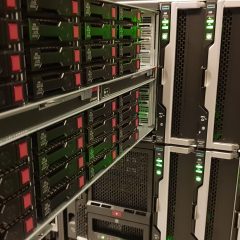Windows – Firewall Group Policy
Firewall Group Policy KB ID 0000979 Problem For everyone who simply does not disable the Windows firewall, then you need to be able to manage what ports are open on your machines. The simplest way to do this is via firewall group policy. This week I had to open TCP port 9503 on the local firewall of my McAfee Move Offload Servers. Below I will open that port on all my machines, but in production I will only apply the GPO to...
Gpupdate: Windows Could Not Locate the Directory Object
KB ID 0001625 Problem Saw this on a Windows client on my test network; User Policy update has completed successfully. Computer policy could not be updated successfully. The following errors were encountered: The processing of Group Policy failed. Windows could not locate the directory object OU=Top-Level,OU=computers,DC=PeteNetLive,DC=com. Group Policy settings will not be enforced until this event is resolved. View the event details...
Windows Group Policy – Disable The Local Windows Firewall
KB ID 0001090 Problem I’ve got nothing against the Windows firewall, it’s certainly a lot easier to manage now than it was back in the XP SP2 days. But I find a lot of clients still just ‘want it gone’ and, providing they have a decent corporate firewall in front of them that’s fair enough. Solution 1. On a domain controller or a client running the remote administration tools > Windows Key+R >...
Using LDP to Find an Objects ‘Distinguished Name’ in Active Directory
KB ID 0001337 Problem There are a few occasions when you need to know an objects ‘Distinguished Name’ (DN). For me it’s usually when I’ve got a device that needs to do LDAP/LDAPS lookups, (RSA Appliance, Netscaler, Cisco FirePOWER, etc). Today someone needed to ‘bind’ a Checkpoint firewall to Active Directory, and asked me to create user, and give them the DN and password. I’ve mentioned...
Exchange 2016 / 2019 Adding a New Email Domain
KB ID 0001297 Problem On EE this morning someone asked this question and I realised I’ve never written it up. So If you want to add a new domain to an already working Exchange deployment how do you do it? Solution Firstly, you need to have purchased the new domain name, and have the DNS records setup properly for the new domain name. See the following article; Setting up the Correct DNS Records for your Web or Mail Server Add...





